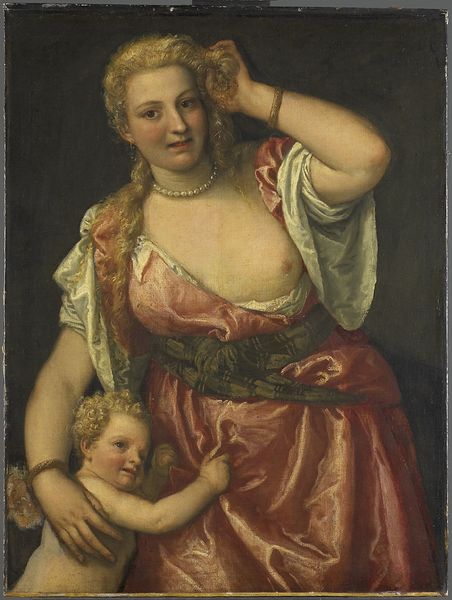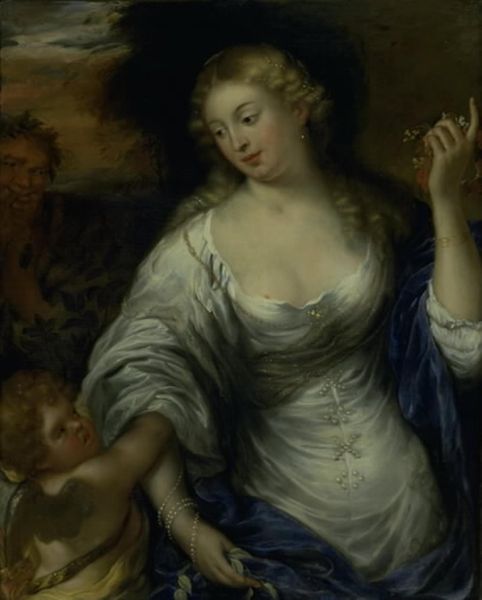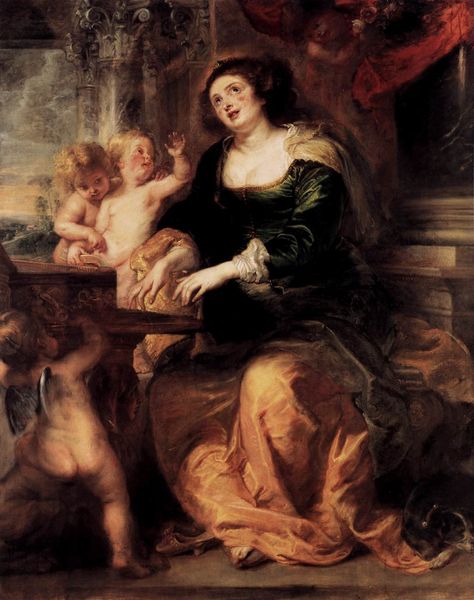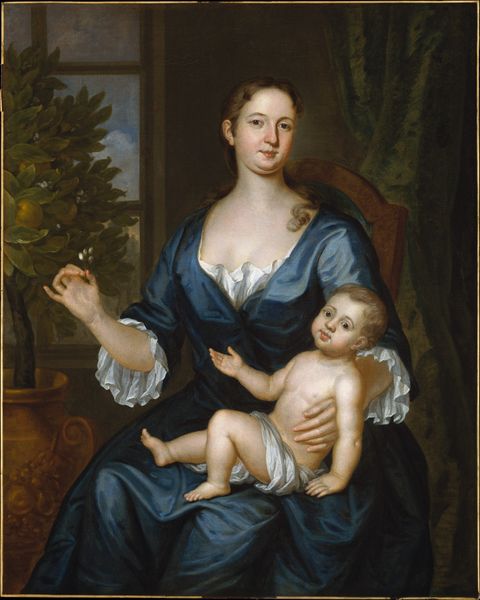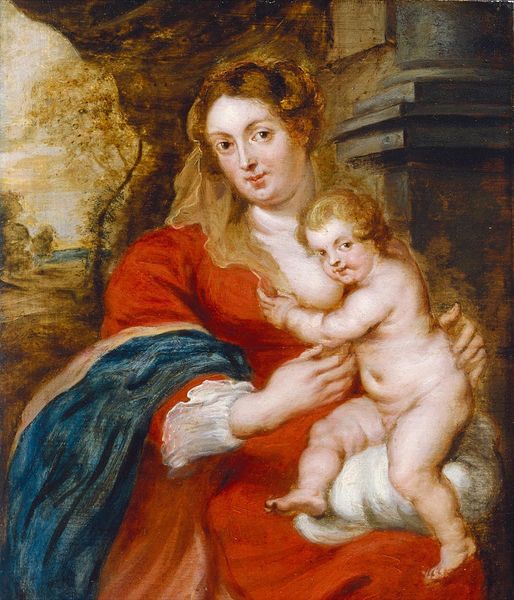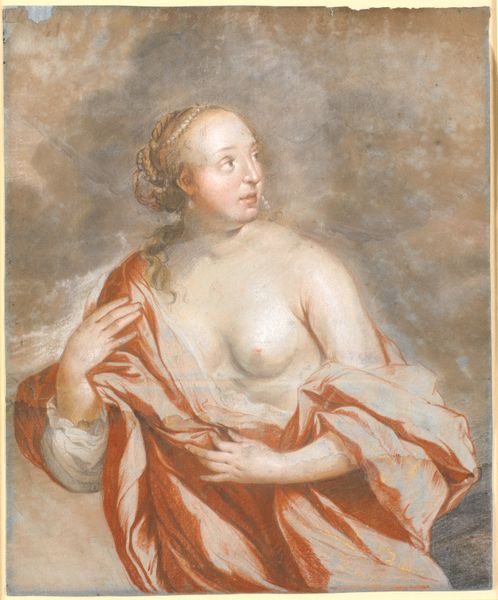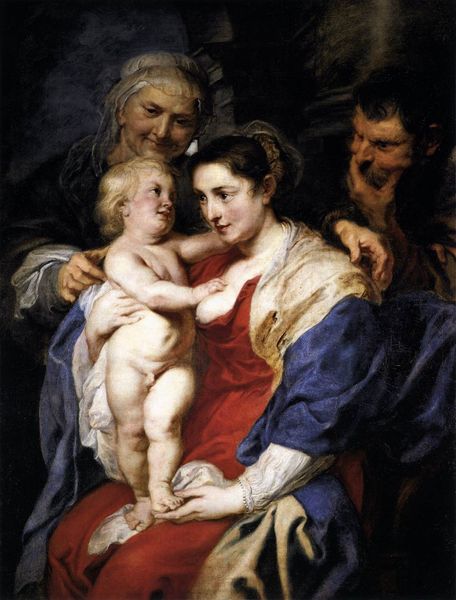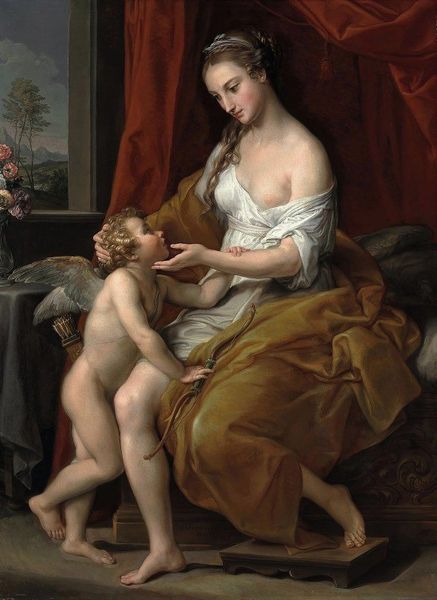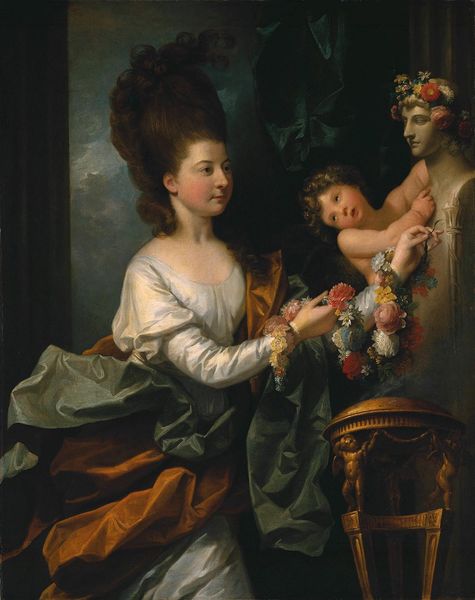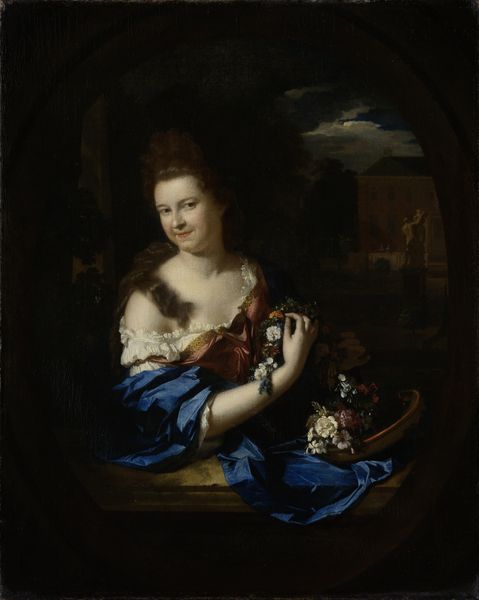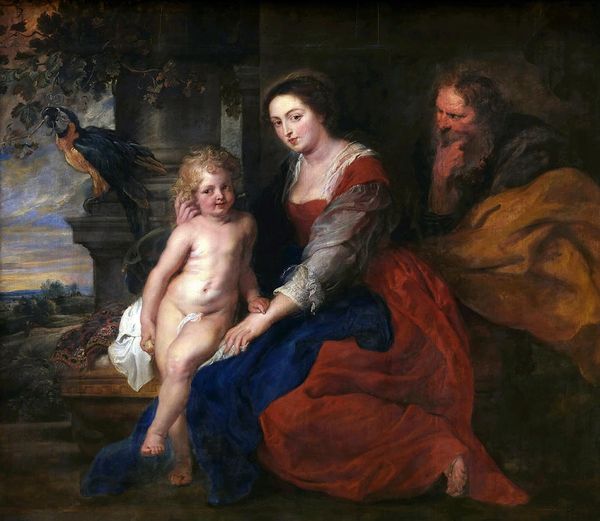
painting, oil-paint
#
portrait
#
allegory
#
baroque
#
dutch-golden-age
#
painting
#
oil-paint
#
figuration
#
oil painting
#
nude
Dimensions: 71 cm (height) x 60.5 cm (width) (Netto)
Curator: Govert Flinck's oil on canvas, "A Lady and her Child as Venus and Cupid," completed between 1648 and 1649, presents us with an allegorical portrait bathed in the soft light characteristic of the Dutch Golden Age. It's currently housed here at the SMK. Editor: Immediately striking is the rather assertive sensuality of the portrait. Venus's exposed breast feels almost confrontational, doesn't it? And the Cupid-child, poised with bow and arrow, has an oddly knowing look. It certainly departs from the demure domesticity one might expect. Curator: It absolutely plays with expectations. The Dutch Golden Age, while known for its domestic scenes and portraiture, was also deeply influenced by classical learning. This portrait layers the trappings of mythology onto a contemporary likeness, likely of a wealthy patron and her child. It served to ennoble them, associating them with beauty, love, and even divine status. Editor: I see it more as a savvy negotiation of power and desire. The woman's gaze, while composed, possesses a palpable self-awareness. She's not merely an object to be admired, but an active participant in the construction of her image, using Venus as a means to both embody and subvert prevailing beauty standards. Curator: Subvert? Perhaps "augment" is a better term. Think of the pearl necklace and jeweled headband - these are explicit displays of wealth integrated seamlessly into the mythological dressing. She is participating in the artistic conventions of her time. Editor: But even those jewels can be viewed through a political lens. Dutch wealth was built on colonial exploitation. Luxury items in portraits from this era were not just neutral markers of status but visible symbols of global inequality. The painting therefore, while seemingly straightforward in its allegorical content, becomes entangled with the social inequities inherent in 17th century Dutch society. The nude breast further complicates this; it feels like a bold statement, both alluring and challenging, within the social confines of the era. Curator: You raise a vital point about the complicated backdrop of prosperity. I appreciate how this single piece reflects the interweaving of personal ambition, artistic tradition, and the wider socio-political environment. Editor: Exactly! This intersectional approach, to look closely at not only the woman, her dress, and the story she's trying to emulate, but also consider where this vision emerges from in space and time opens a dialogue. Hopefully one that gives us a much deeper understanding about art, its history and context.
Comments
No comments
Be the first to comment and join the conversation on the ultimate creative platform.

